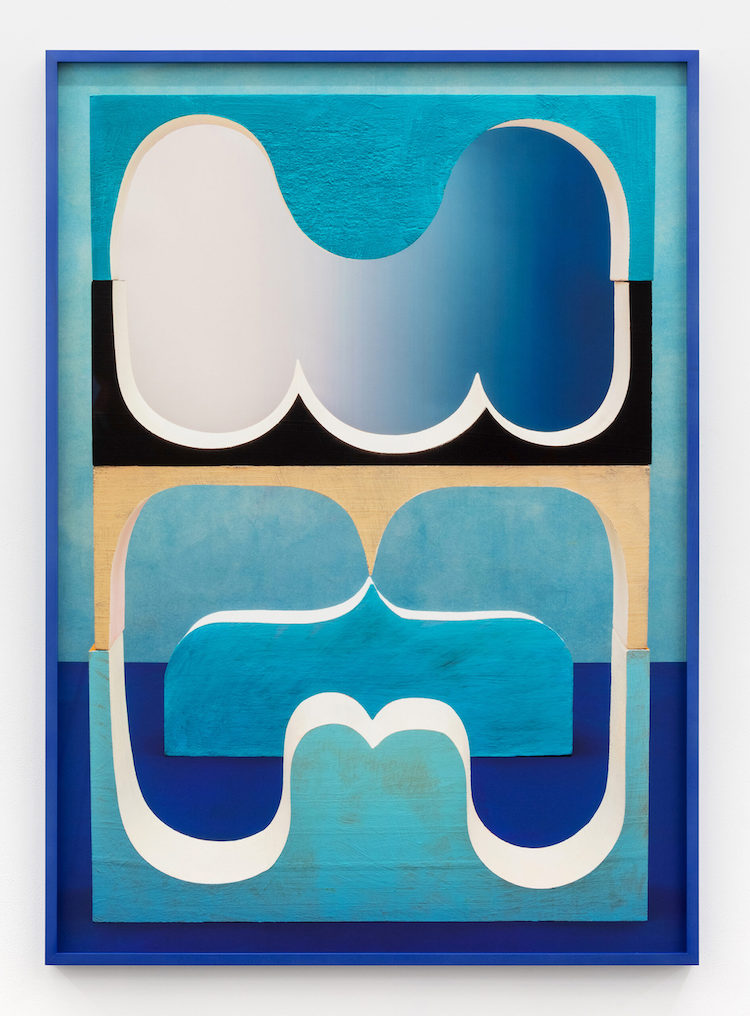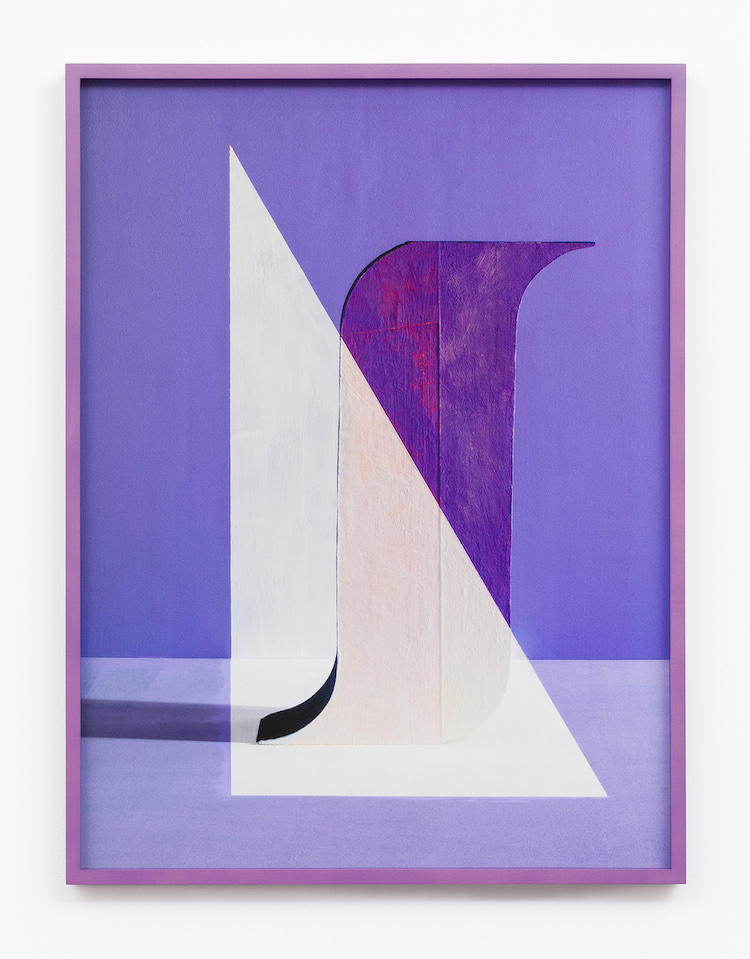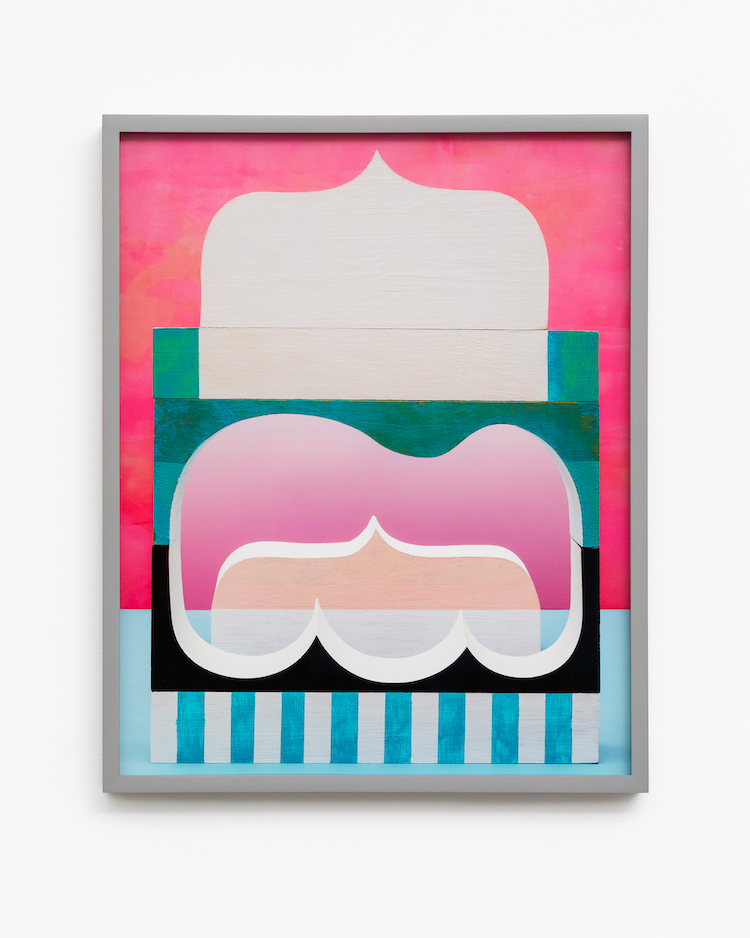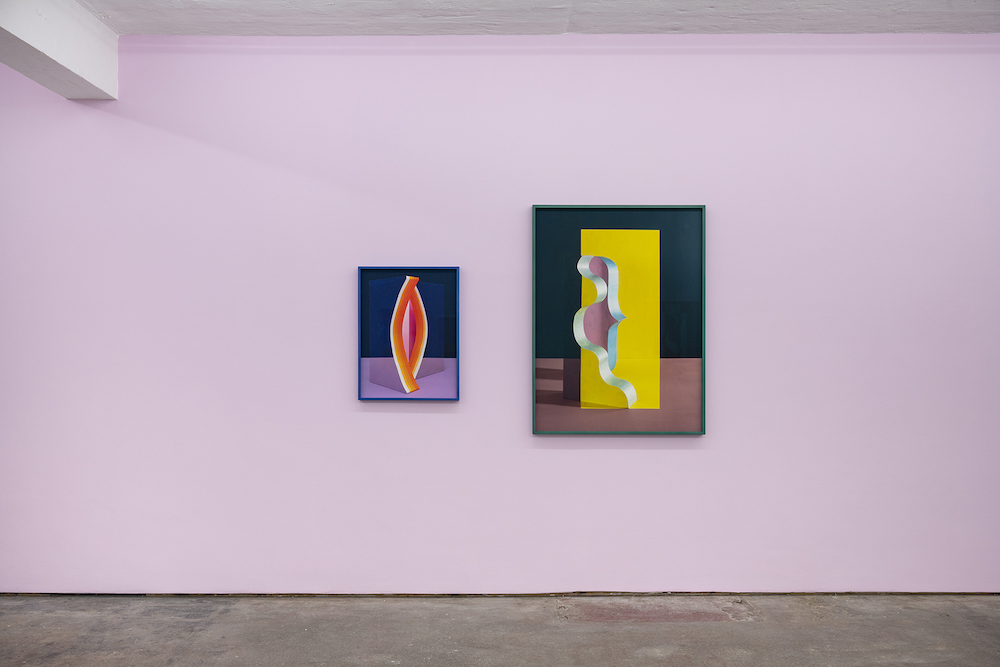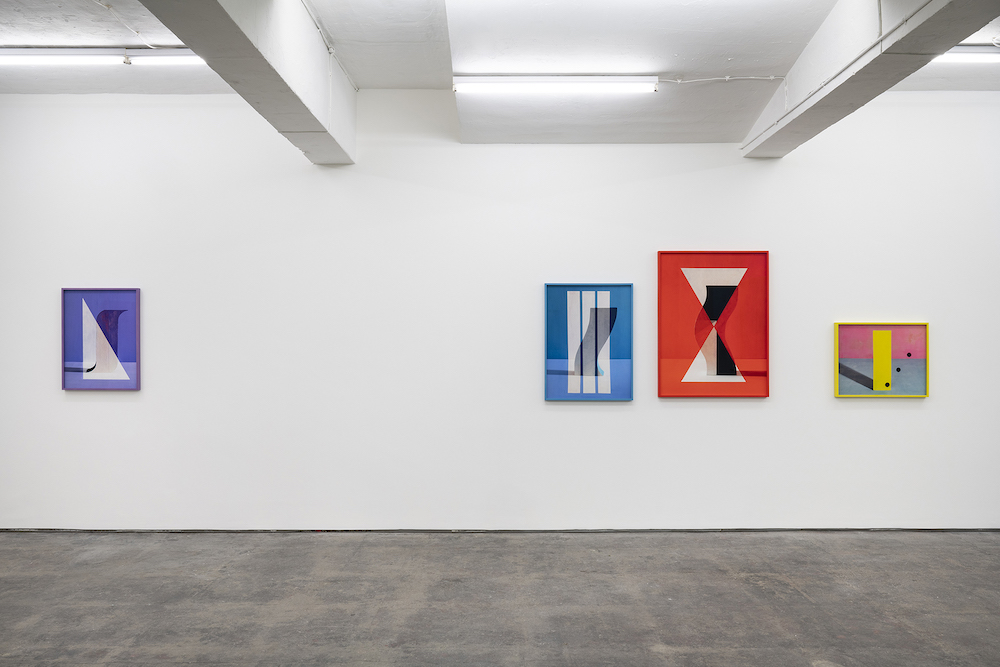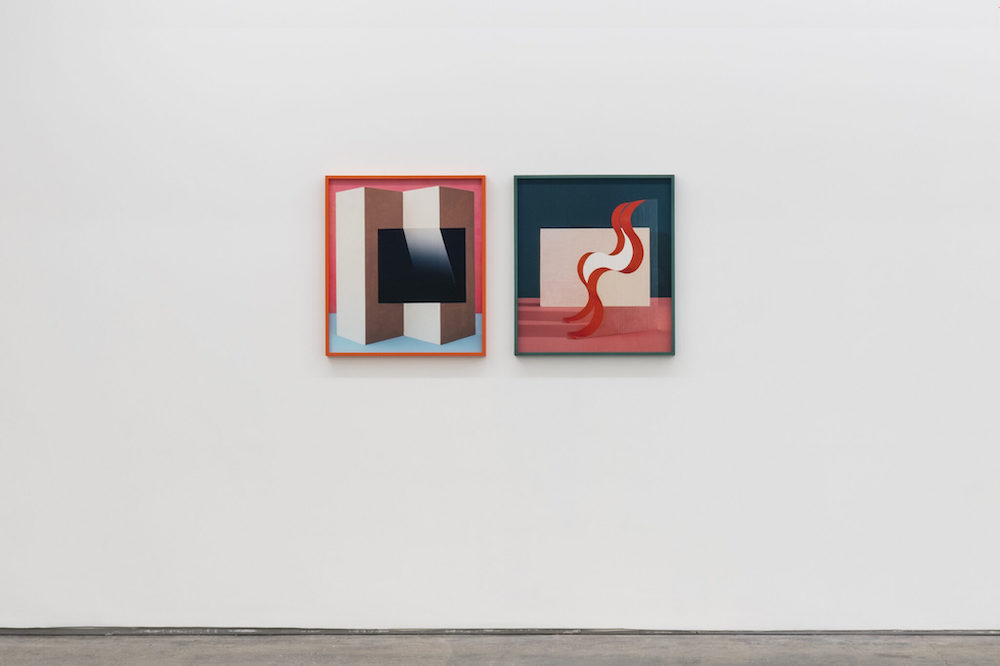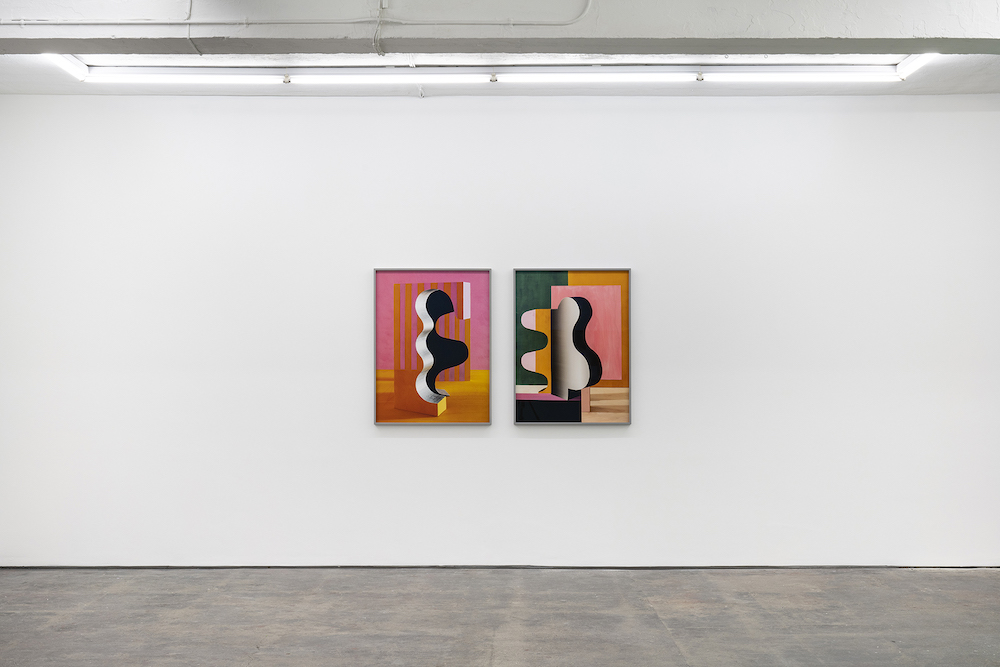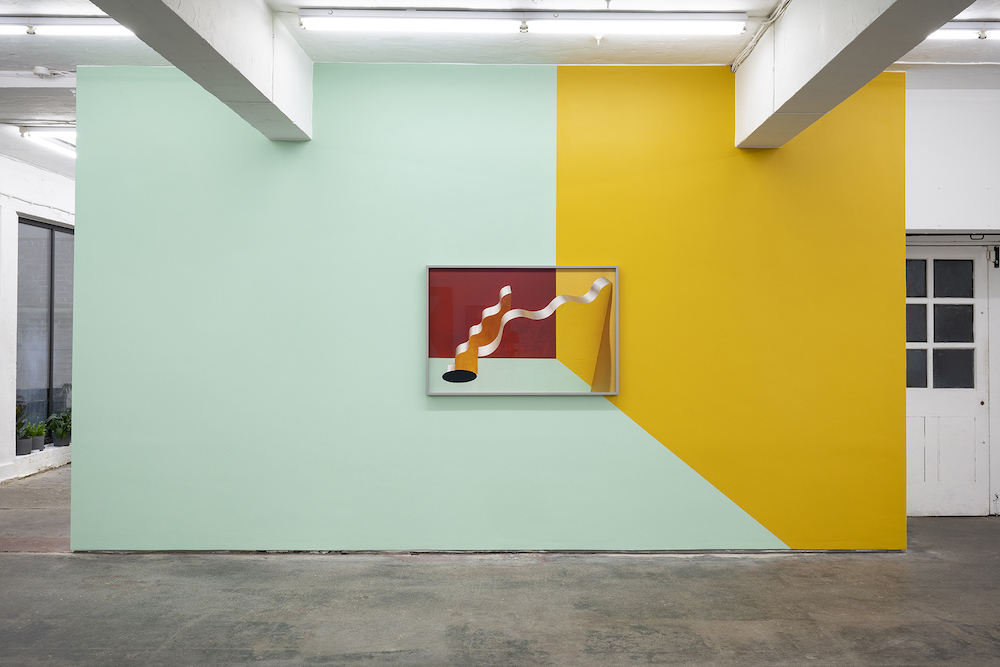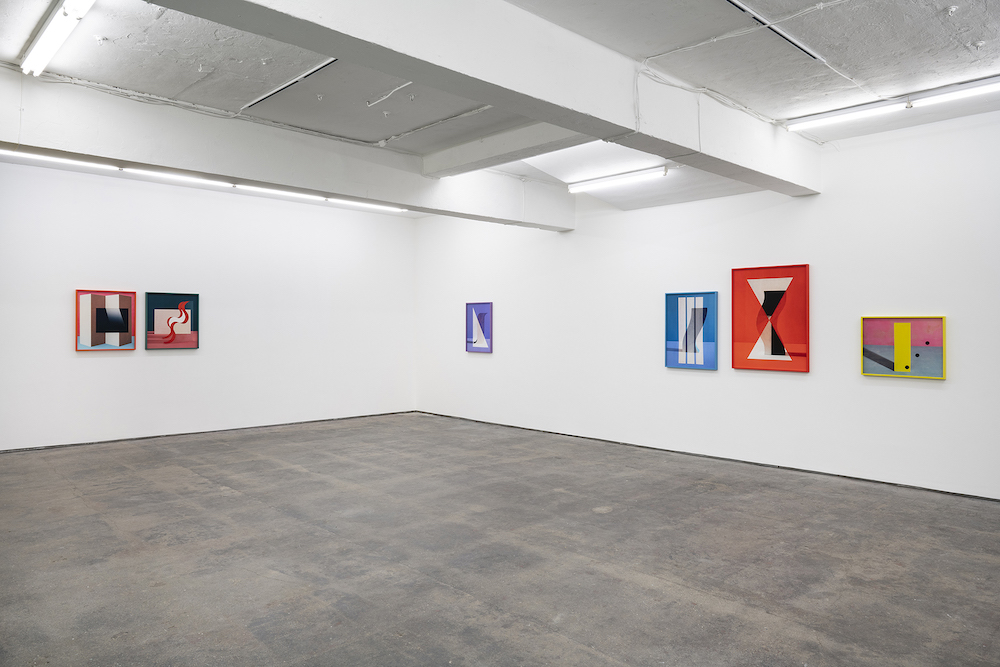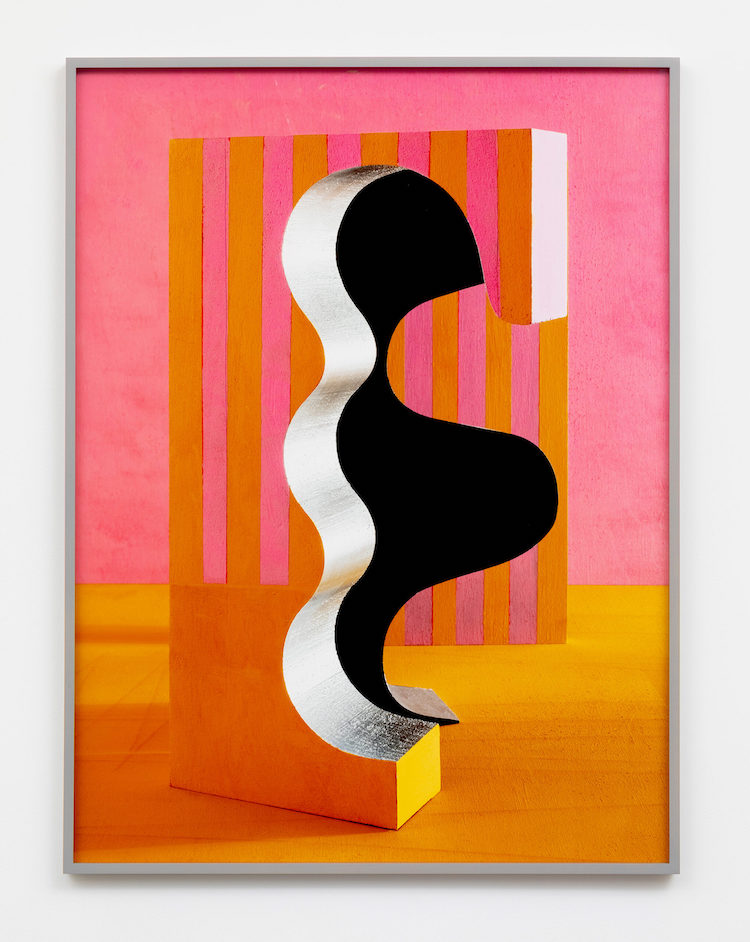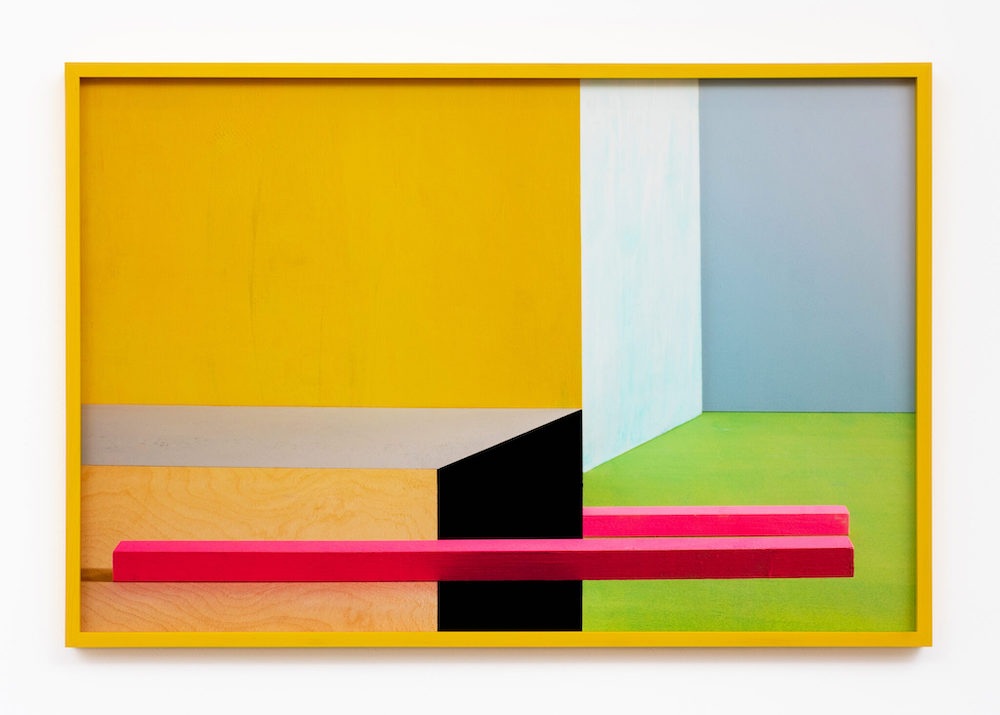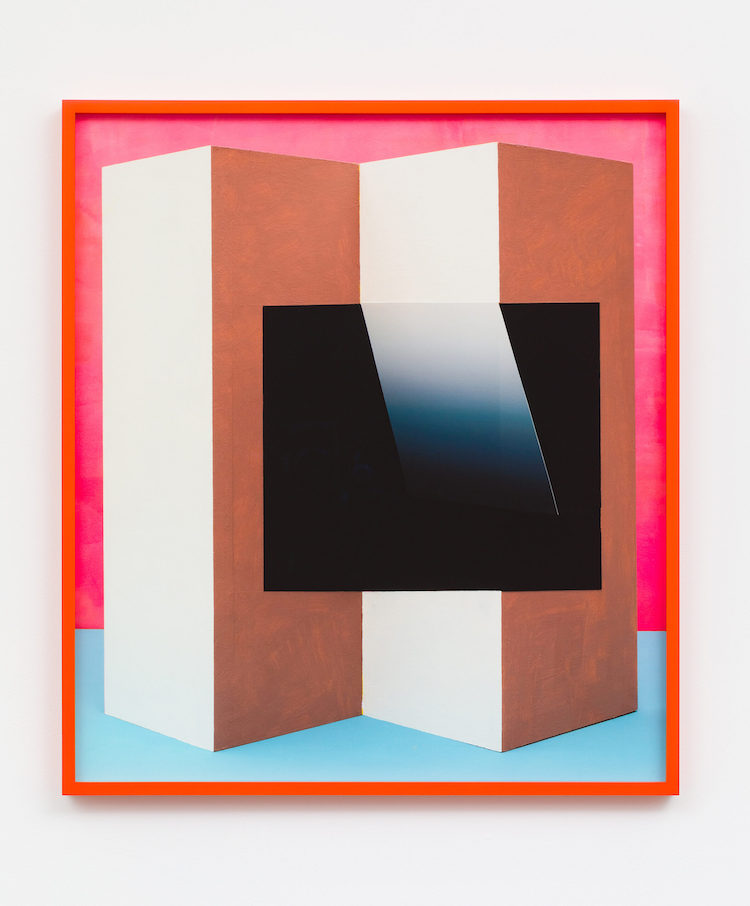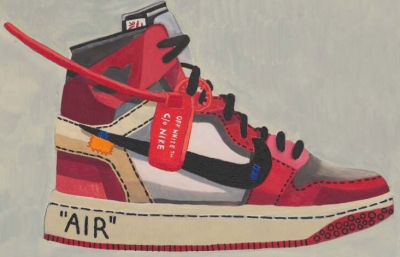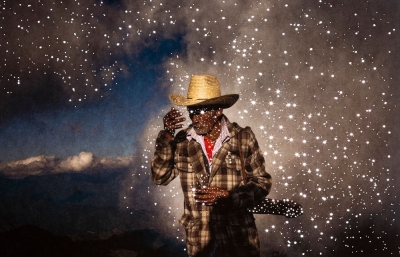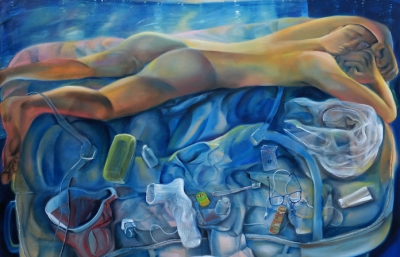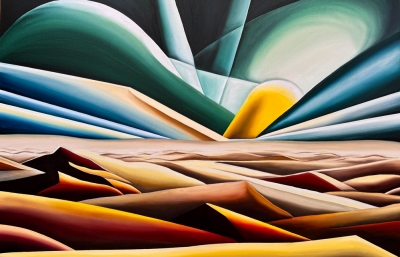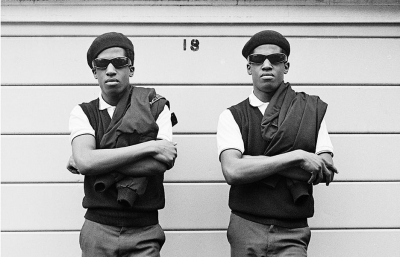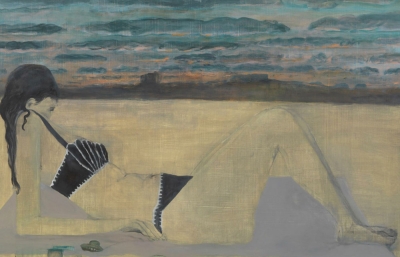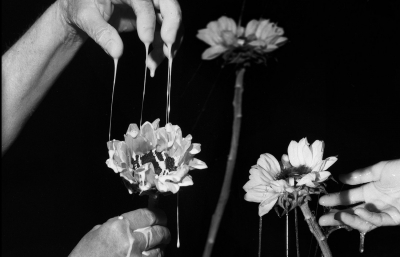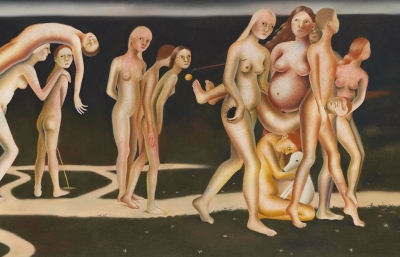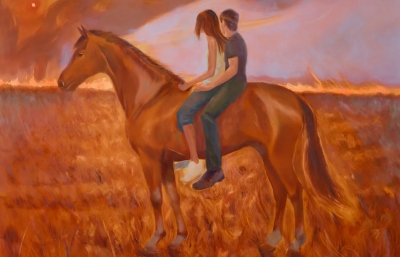Nonfiction is the second solo exhibition by American artist Erin O’Keefe at Seventeen, encompassing a new series of unique photographs that are displayed in groupings across the gallery. The exhibition title references the essentially documentary and representational nature of these images, at the same time as alluding to the illusionary effect they evoke in relation to the viewer.
Expanding on the themes and techniques from her previous solo show in 2020, O’Keefe takes carefully lit photographs of painted wooden objects against a matte, coloured backdrop and foreground. These temporary arrangements are set up in the artist’s studio in New York, photographed then dismantled. The raking shadows grounding the vertical elements is perhaps the most prominent clue that the viewer is looking at objects arranged in space instead of a flat, painted surface, which might be an initial reading. The columns overlap in a way that makes the positioning of each item ambiguous; shadows disappear unexpectedly, while the coloured horizon line continues improbably across an object in the foreground. The same painted object may recur across multiple photographs, signalling the temporary nature of the arrangements. The kit of painted parts can be disassembled, and recombined with the same pieces in different spatial configurations and lighting, creating new proportions, colours and compositions. Paint is deployed roughly and efficiently, the camera capturing the economy of the brushstrokes and showing layers of colour beneath from previous setups. Creating a stage of uncertain proportions, O’Keefe plays a number of games with perspective and space, depth and flatness – encouraging multiple and contradictory readings of each work.
O’Keefe is interested in producing work with a wide range of possible interpretations and readings from a limited set of possibilities with wood, paint, a light source and a camera. In the work HURRY UP PLEASE ITS TIME (2023), a red film appears to float over the image, two triangular portals form an hour-glass shaped window through which the viewer can see a curved wooden object, painted black and textured, dirty white. This window hovers in space, caught between the image surface and the viewer. This is the same ‘space’ implied by Jan Dibbets in his studio wall drawings. This fictional space conjured into existence by both Dibbets’ Perspective Correction works (1967-69) and O’Keefe in these photographs, creates a constructive uncertainty in the viewer, relying on their reading and misreading of space to create a new thing. O’Keefe’s window is initiated through painting white next to red, the final and essential component being the viewer and their crucial misapprehension.



